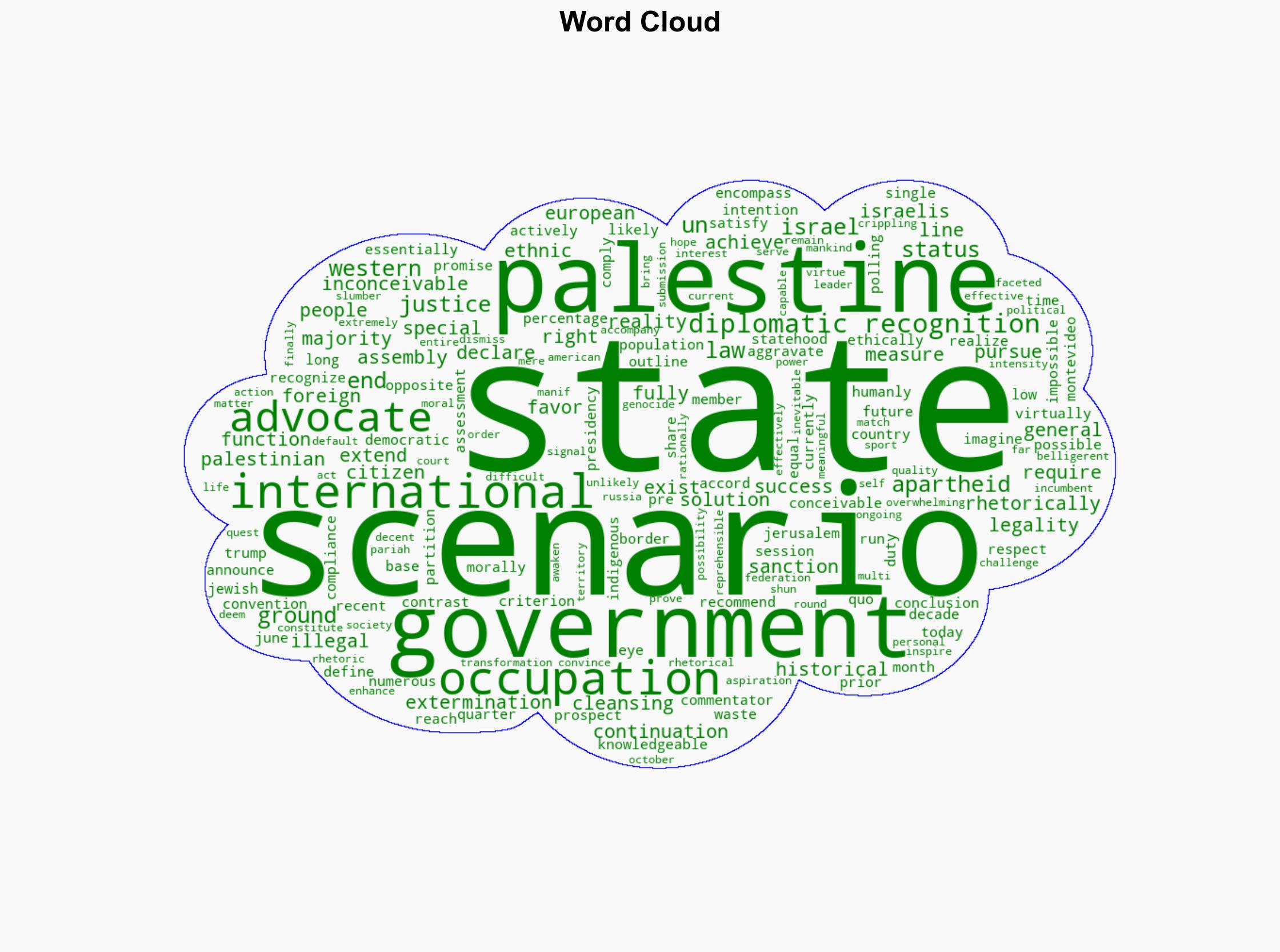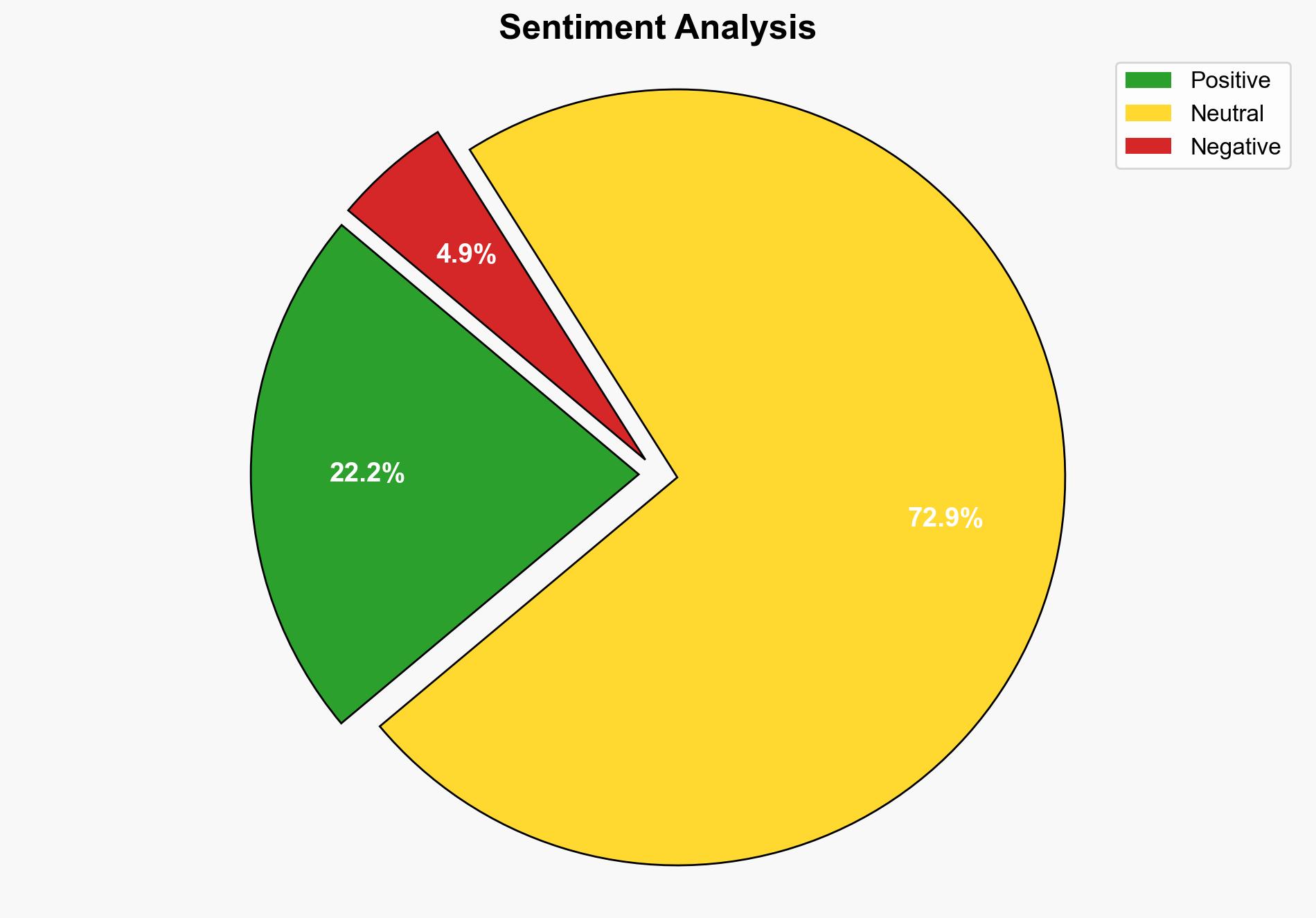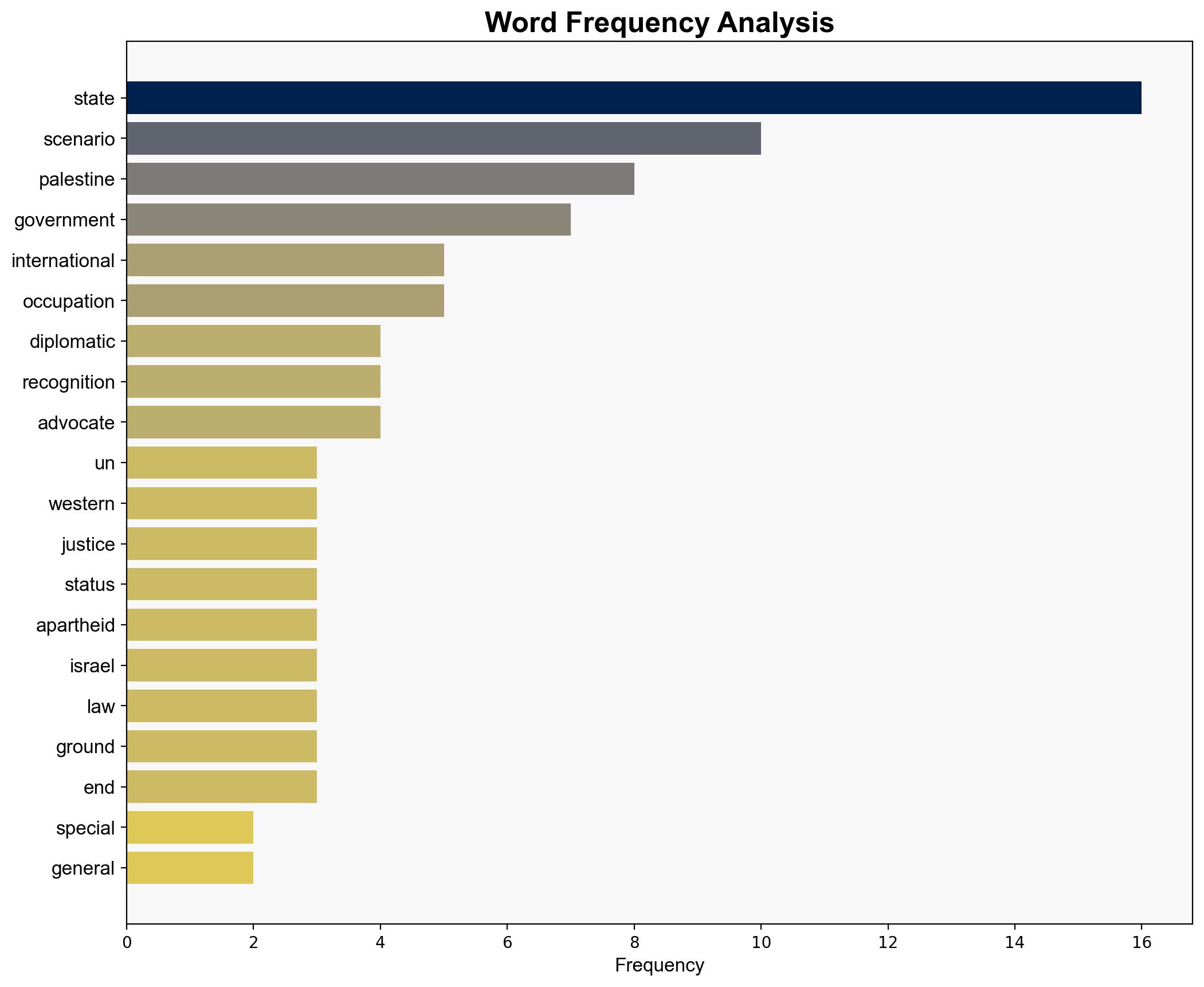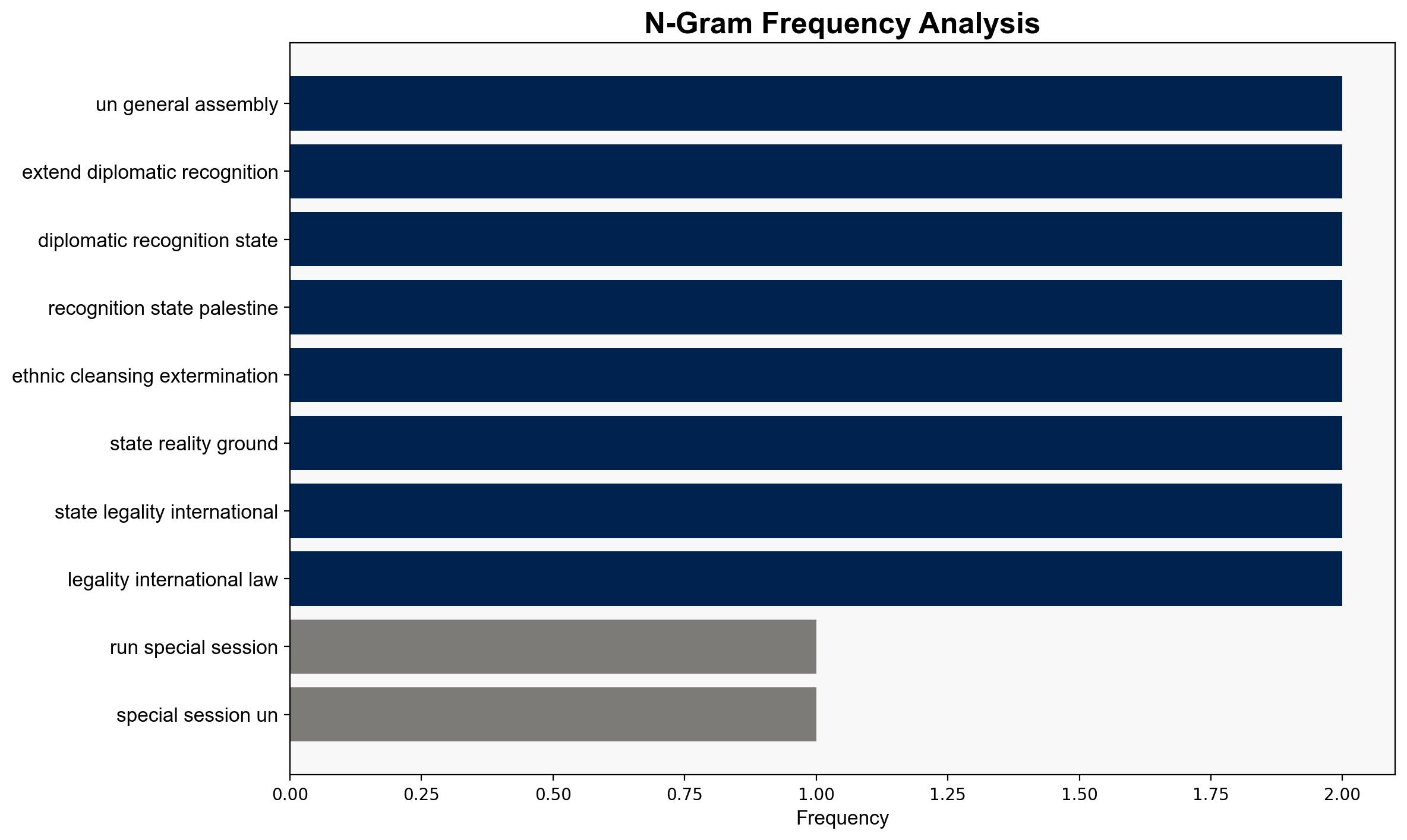Three Scenarios for the Future of Palestine – CounterPunch
Published on: 2025-09-11
Intelligence Report: Three Scenarios for the Future of Palestine – CounterPunch
1. BLUF (Bottom Line Up Front)
The most supported hypothesis suggests that the continuation of the status quo, characterized by ongoing occupation and limited international recognition, is the most likely scenario for the future of Palestine. This assessment is based on current geopolitical dynamics and the lack of substantial international pressure on Israel. Confidence Level: Moderate. Recommended action includes diplomatic engagement and support for international legal frameworks to address human rights concerns.
2. Competing Hypotheses
1. **Continuation of the Status Quo**: This hypothesis posits that the current situation will persist, with Israel maintaining control over Palestinian territories and limited international intervention altering this dynamic. This scenario is supported by the lack of cohesive international action and the complex geopolitical interests involved.
2. **Emergence of a Fully Democratic State**: This hypothesis envisions a single democratic state encompassing historical Palestine, with equal rights for all inhabitants. Although this scenario is morally appealing, it is less supported due to the significant political, social, and logistical challenges it presents, as well as limited support from key international actors.
Structured Analytic Techniques (SATs) such as Cross-Impact Simulation suggest that the first hypothesis is more likely, given the current geopolitical landscape and historical precedents.
3. Key Assumptions and Red Flags
– **Assumptions**: The continuation of the status quo assumes that international actors will not significantly alter their current policies towards Israel and Palestine. It also presumes that internal pressures within Israel and Palestine will not lead to substantial change.
– **Red Flags**: Potential cognitive biases include confirmation bias, where analysts may overemphasize current trends without considering emerging factors. The lack of comprehensive data on grassroots movements within Palestine and Israel could lead to blind spots.
4. Implications and Strategic Risks
– **Geopolitical Risks**: Continued occupation may lead to increased regional instability and potential escalation of violence.
– **Economic Risks**: Prolonged conflict could deter investment and economic development in the region.
– **Psychological Risks**: Persistent conflict may exacerbate humanitarian issues and contribute to radicalization.
5. Recommendations and Outlook
- Engage in multilateral diplomacy to encourage a renewed focus on peace negotiations.
- Support international legal efforts to address human rights violations.
- Scenario Projections:
- Best Case: Successful diplomatic intervention leads to a two-state solution.
- Worst Case: Escalation of violence and further entrenchment of the status quo.
- Most Likely: Continuation of the status quo with periodic international diplomatic efforts.
6. Key Individuals and Entities
– No specific individuals are named in the source text. However, entities involved include the United Nations General Assembly, Western states, and the International Court of Justice.
7. Thematic Tags
national security threats, geopolitical stability, human rights, regional focus




